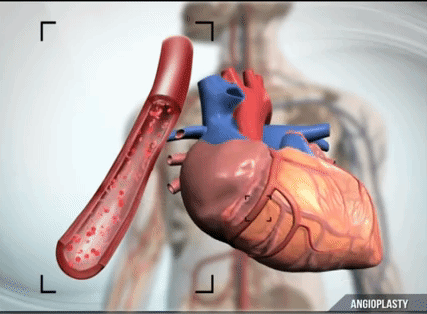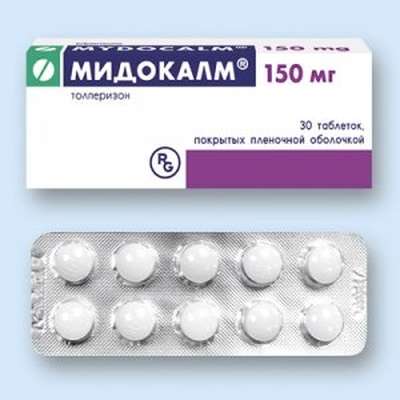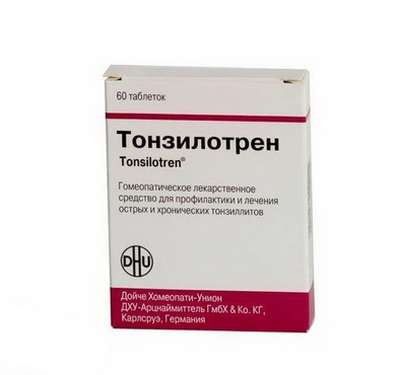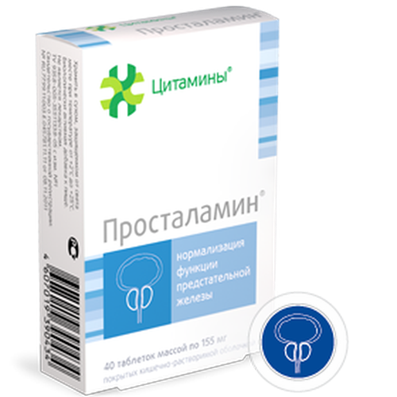Heart attack: Symptoms and Treatment
22 Oct 2016
What happens during a heart attack, his symptoms and subsequent rehabilitation?
Myocardial infarction is process of the death (or, in scientific terms, necrosis) of the heart muscle, which occurs usually due to blockage of one or more thrombus arteries supplying blood to the heart muscle. The most interesting events in myocardial infarction developed on the surface of atherosclerotic plaques (so-called deposition of cholesterol and its esters in the thickness of the artery walls). The similarity of the vessels people leading unhealthy lifestyles, with emergency tube allows us to call atherosclerosis "rust of life."
Myocardium
Heart - a muscular body, which consists of four chambers (two atria and two ventricles). From the outside it is covered with pericardium - a dense connective tissue bag, inside of which is the thickest layer of the heart - the myocardium. Inside the ventricles lined with the endocardium. Thus, the myocardium - is the fat layer, the entire thickness of the heart muscle, it is most suitable to its vessels.
Heart is very demanding to the blood supply. Its resources and energy supply is minimal, so it constantly needs the influx of large amounts of blood. If the hand, for example, you can pinch harness for an hour, and then the tow release, nothing catastrophic will happen, but for the heart for several minutes in the bloodstream without technically extremely dangerous. That is, the time during which the heart vessels can be blocked, then the reduction may occur is only 30 minutes. After the 30 minutes after blood flow to the heart has stopped (normally closed thrombus) begins progressive death of heart cells. The pool, which is supplied with blood clogged arteries, two hours after occlusion survived only half of the cells. A six hours of about 10% remains.
Causes of heart attack
The main reason - it's still smoking, even very rare, because it is, firstly, leads to long-term defeat of healthy internal vascular sheath, which cease to "repel" cholesterol, and secondly, increases the risk of arterial sheath rupture when plaque I have grown. In second place is high blood pressure. In third place - a bad heredity, age, high cholesterol and transferred within the last five years of heart attacks and strokes. There is a powerful connection between the level of "bad" cholesterol (low-density lipoprotein, LDL) and the risk of heart attack.
Other factors - is overweight, diabetes, poor nutrition, low physical activity, depression, stress and overall health, including a variety of inflammation. When systemic inflammation (ie inflammation inside the body, not connected, for example, damage to the skin) is formed by C-reactive protein, which increases the risk of heart attack.
What happens during a heart attack
The entire ensemble of events developing in the fibrous cap that separates atherosclerotic plaque from the bloodstream. It is not entirely clear why the plaques so loved the vessels of the heart, but they're settle and gradually grow. If plaque is a large, large (more than 70% of the diameter of the vessel), it prevents the passage of blood. Man begins its "feel" in the case if, for example, is running. The heart begins to "feel" the plaque, it really hinders the passage of blood through the vessel. If the plaque is very large, clogs more than 90% of the vessel, the pain can be observed even at rest - is angina (otherwise - angina pectoris). But it is very dangerous and may be a small plaque with a thin fibrous cap, which "do not hurt" even at high physical stress.
In the case of plaque rupture its contents flows into the blood, and the blood clotting system is activated. First breaking start to adhere platelets. Then, a white clot, and then - the so-called red thrombus with the inclusion of threads of fibrin - the protein formed by the action of the enzyme thrombin. In parallel with the process of thrombus formation is activated system that resists thrombosis and makes the so-called thrombolysis. It is our internal system, which is designed to withstand the occurrence of blood clots. Its capacity is usually much smaller than the power of thrombotic events system, so in most cases, a blood clot is formed. That is, the blood coagulation system, which saves the life of bleeding, are activated at full capacity, which sometimes leads to death.
It is important to understand that the larger the vessel, which is sealed, and the closer to the mouth of the container is formed thrombus, the more severe heart attack. Nevertheless, sometimes there is a happy scenario: if there was a small plaque rupture, the system opposes thrombosis, a blood clot that can be sucked up, while a heart attack is not.
Symptoms of a heart attack
Man with myocardial suddenly begins to feel severe pain in the chest or in some cases in the abdomen - if struck by the rear wall. In patients with diabetes mellitus heart attacks may be accompanied by mild pain, so they need to be especially careful. If, within six hours of blood flow obstacles are eliminated by using thrombolytics, then most likely, will not be the consequences of a heart attack is very scary. Otherwise there is a risk that a large part of the heart cells die and its pumping function greatly fall, leading to heart failure.

Types of heart attack
We share a myocardial infarction in the different categories, primarily for displays on the cardiogram - it is very convenient from the clinical point of view. I must say that there are three key feature in the diagnosis of myocardial infarction: the first - a strong pain in the chest; second - typical of myocardial infarction change in the ECG; and third - the blood entering this cardiac proteins called troponin. The heart muscle dies, and troponin is released. To make a diagnosis, you need to have converged, these three features. At most, the early stages of a heart attack is not yet time to increase the concentration of troponin in the blood. Then the diagnosis is made clinically - enough pain and a number of symptoms to begin to act.
On the ECG is clearly visible heart attack. One kind of heart attack occurs with so-called segment depression ST, and the other - with ST-segment elevation. The depression indicates that most likely not very large occluded artery that provides the inner layer of the heart muscle. A elevation, ie segment elevation ST, says a major artery occlusion. In the case of depression, usually piercing the entire thickness of the heart muscle scar is not formed. And if there is ST segment elevation on the ECG, indicating the loss of a large vessel, it means that the affected side of the heart to the entire thickness. Previously, it was called transmural myocardial infarction, and now we refer to as Q-wave myocardial infarction. If the ECG has deep teeth the Q, then on the heart has a large and deep a scar, in which there are no living muscle cells, but only the connective tissue.
We have a right and left coronary arteries. Right coronary artery is on the rear wall, is divided into left circumflex artery which supplies the side wall, and a front interventricular supplying the front wall. Most often affects the "most important", left anterior descending branch. We distinguish species on the extent of myocardial infarction lesion thickness and localization myocardial infarction in the front wall, the rear wall of the envelope - in general, depending on the affected artery.
As previously mentioned, a significant hazard may be not only large, but also small plaque with a thin fibrous cap. These are often men, especially young people, who have just started to grow plaque. Accordingly, it is a different clinical scenarios: a small plaque rupture and rupture of a large plaque. They are diverse, but both lead to a heart attack.
Heart attack must be distinguished from other forms of disruption of the blood supply to the heart. For example, ischemia - oxygen starvation. It can take a long time and do not lead to the development of myocardial infarction. The vessel may be closed halfway plaque grown alone and even the heart can not feel that there is plaque, because the blood which passes through the half-closed vessel, enough to satisfy the oxygen demand. If a person, for example, runs the blood that flows through the half-sealed container becomes insufficient, and the heart starts to hurt.
Treatment of Myocardial infarction
Monitoring of patients with a heart attack in a clinical setting it into practice in the 60-ies of XX century. The history of the struggle with myocardial infarction quite fresh because still alive people who have developed approaches to the treatment of this disease.
With regard to preparations that appeared primarily those which reduce the heart rate. If you lower the heart rate, it drops the heart's need for oxygen, the chances of survival from cardiac muscle above. Besides there drugs that dissolve blood clots in blood vessels. Interestingly, these drugs have been derived from the waste products of bacteria, and they activate our inner anticoagulant blood system.
We found out, that Meldonium influences on lipid profile: total cholesterol (TC), β-lipoprotein (β-EP), tri-glycerides (TG), very low density lipoproteins (VLDL), high density lipoproteins (HDL); Meldonium has influence on myocardial contractility and ejection fraction: Mildronate impacts on the clinical condition of patients, quality of life and exercise tolerance.
One of the most common drugs are thrombolytics - medicines that thin the blood. But they are, firstly, not very efficient, because not all dissolve thrombi. Secondly, they can be dangerous, because it activates anticoagulant system in all organs and tissues, because of what may develop severe bleeding. Therefore, a more correct approach - is to come up with a catheter for vascular lesions of the heart, pull out the small conductor and pass through the clot. In this conductor, both in monorail, hold the balloon to inflate the balloon, and at this point the clot, which is located in the vessel of the heart, is pressed into the wall of the vessel - like if you step your feet on the wet sand. Thereafter, the balloon is deflated, and blood flow is restored. This is the most advanced equipment. It is called angioplasty.
The maximum variant is crucial to complement the installation of inflating the balloon within the vessel kind of corset - stent. The stent will press inside the remains of the atherosclerotic plaque and will not form new clots. Because, as you know, if the vessel is in a certain place is damaged, there will continue to be sticking to the same place platelets so simple angioplasty without stenting, we are not very effective.
Prophylaxis
After the discovery of aspirin action started up the era of prevention, aiming to ensure that atherosclerotic plaque is not torn. Key products here - this is a statin. When doctors do not have time to explain, they say that they "reduce cholesterol". I, of modern cardiology, it seems that the decrease in blood cholesterol as such - it is rather the side effects, but not the main action, because the main point of this drug application - this is the fibrous cap of atherosclerotic plaque.
With the reduction of cholesterol activated system which starts make cholesterol from various portions of vessels, including the plaques. Removes cholesterol in the bile. Plaque becomes denser, the tire becomes more dense, the risk of fracture is reduced, even if the person continues to smoke, and lead healthy lives. Important in the prevention of heart attack - to make the tire less prone to rupture. The second most important aspect - is the control of blood pressure, because it is a provoking factor of plaque rupture. Therefore, almost all drugs that lower blood pressure and prevent myocardial infarction.
The calculation of risk of heart attack - it is quite a complicated thing. If the risk is low, it is possible to manage without medication at all. If the risk is medium, then, maybe, you just statin. If the risk is high, for example if a person has had a heart attack or has chest pain related to the fact that there is a plaque, then it is essential to apply both a statin and a drug that reduces blood pressure and pulse reducing medication (to reduce the load on the myocardium). It is a common misconception that in order to take a statin, you need to know what your cholesterol. No difference which cholesterol in humans. If he already hurts the heart or had a heart attack, it is required to take a statin.
Current research
Holy Grail today - open the safe, non-invasive methods for assessing the stability of the fibrous cap of atherosclerotic plaque. Then it will be possible to find people who need only a massive heart attack prevention. In addition, look for ways to simplify the procedure for treating heart attack. Who has created devices that let you quickly spend revascularization, that is, to restore blood flow in clogged blood vessels, but a very important issue here - is how to prevent re-infarction in the same or adjacent the damaged portion of the vessel supplying the heart. Atherosclerotic plaque is so aggressive that grows through the mesh of the stent, even if it were applied to the most powerful drugs that are sacrificed living cells. It is important to learn to stop plaque growth after myocardial infarction.
Another question is how to make so that after myocardial infarction blood was sufficiently fluid to avoid a repeat heart attack and reduce the risk of bleeding? There are blood thinners, as well as those that affect platelet activity promotes thrombosis. Occurred after infarction, the heart pumping function declines, and the heart can not meet the requirement for oxygen - it is called heart failure. Therefore, great efforts are intended to treat her exactly. For this purpose, and stem cells are administered, so that they settled into scar tissue, and various drugs that enhance the functioning of the surviving cells in the heart, and this device for maintaining blood circulation - artificial heart or some more miniaturized devices.
Also plays an important role of preventive cardiology: myocardial infarction easier to prevent than to cure. I must say that for ordinary people, especially in Russia, it is necessary to organize proper transport of patients to the ambulance bring people in time for the first six hours after the onset of chest pain, when you can do angioplasty. Then the function of the heart is restored, while the myocardial infarction will be severe consequences. With respect to what you can do after a myocardial infarction, - organize the normal treatment system and application resources that are perfectly proven.
In the world the rate of death from myocardial infarction is reduced, but the statistics in this case - the thing is very crafty. Myocardial infarction, which developed as a result of heart failure, and it develops in a similar way stroke are on the first place among the causes of death in the developed world.

 Cart
Cart





